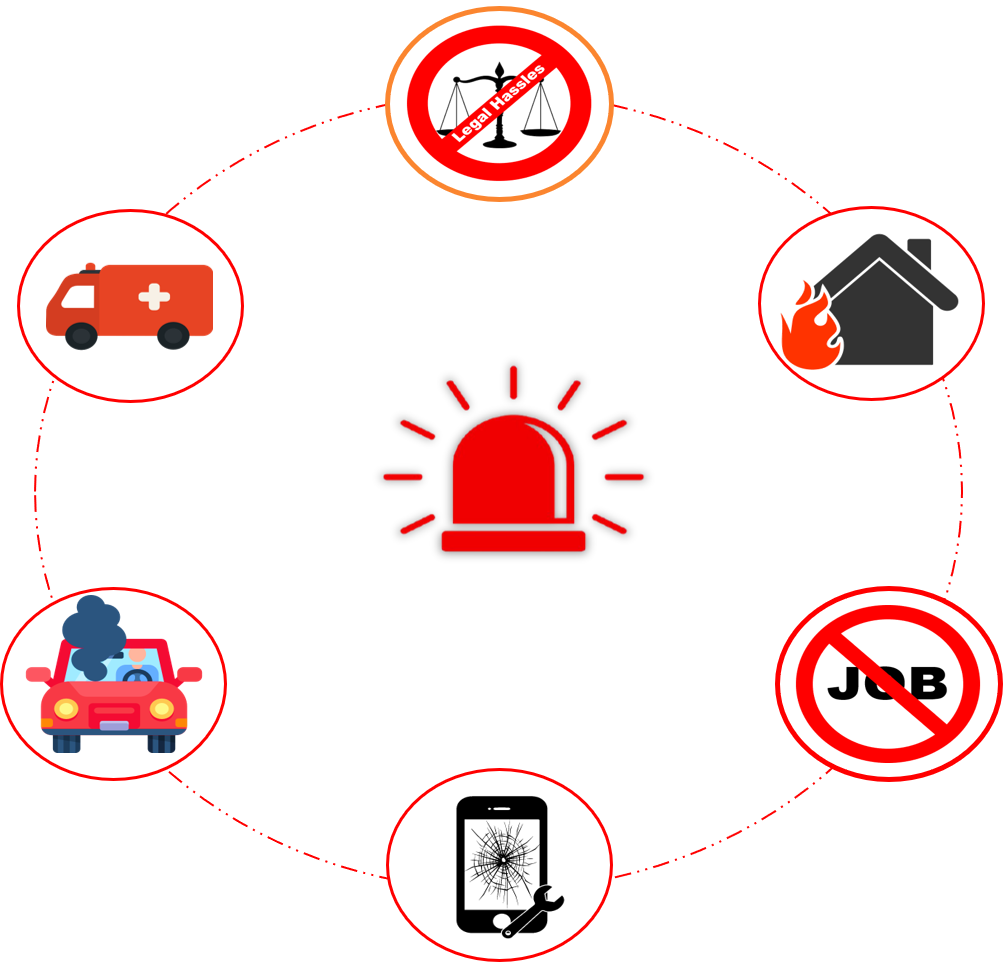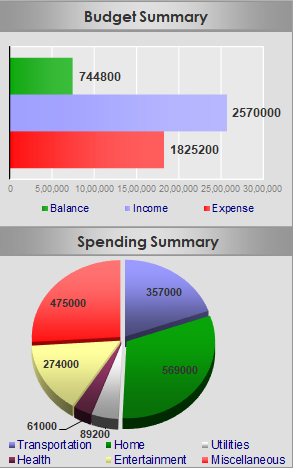Emergencies always come without warning.
Emergencies always come without warning, but they are an unavoidable part of our life. By their very nature, emergencies are unpredictable, unavoidable, and urgent. You can’t predict what will happen from one day to the next.
The Covid pandemic in 2020 taught us that disasters can happen at any time and that your only option is to be ready.
Even if unforeseen circumstances cannot always be avoided, having emergency savings can lessen the financial strain of coping with them for you, your family, or friends in the event of any of the following:
- Medical Emergencies– Accident / Illness / Calamity / Sudden Death / disability
- Major unexpected repairs such as home or car repairs
- Legal Hassles – Professional, Personal, social media
- Job Loss, Business Loss, Pay Cut.
- Property Damage / Fire / Theft / natural calamity
- Loss/damage of smart phone
- Unexpected travel costs.
Prepare and Prevent, Don’t Repair and Repent!!!


What is the right amount to put aside for an Emergency Fund?
When you first start building an emergency fund, you should take three major steps.
Step 1: Create a budget, or figure out how much you spend each month.
Step 2: Make a list of your monthly home expenses and categorise them as mandatory (obligatory) or optional (discretionary).
Food and medical expenses, rent, loan EMIs, school fees, basic repairs and maintenance, insurance premiums, and anything else that you consider indispensable are examples of obligated expenses. Do this for a few months to get an idea of your average mandatory costs. This activity may also help you make a list of your expenses and eliminate unnecessary spending. You can calculate how much you need in an emergency fund after calculating how much you spend in each of these categories on a monthly basis.
Step 3: Because you never know how long an emergency will last, you should set aside money for a 3-6 month emergency fund. Following the example of this pandamic, an ideal emergency fund should be worth 6 to 12 months of salary.
For example, if you earn Rs.200,000 per month and spend Rs.100,000 on necessities, your emergency fund should be between Rs.400,000 and Rs.12,000,000. It may vary depending on the number of income earners in your family, the number of dependents, and your monthly expenses.
How Much Will You Need to Protect Yourself? 3, 6, or 12 months of expenses?
How to Create a Rainy Day Fund …..Points to Remember
We keep a first-aid kit at home and an extra key with a neighbour in case of an emergency. Similarly, an emergency fund must be created.
-
-
- Determine a time frame for constructing your fund: three months, six months, or even a year.
- Create a list of all of your current liquid assets.
- Make a month-to-month commitment to yourself.
- You should set up a separate fund (account) for the accumulation so that you do not spend it and it is available in case of an emergency.
- Any extra money or earnings should go into your emergency fund.
- Take steps to increase your income and decrease your expenses.
- Regularly review your spending plan, i.e. budget
- Set some constraints on when and how you’ll spend that money.
- If you must withdraw the fund, do so only in an emergency and spend it wisely.
- Remember that once money is spent, it takes much longer to replace it; therefore, start saving as soon as possible.
-
Prevention is better than cure!!!
Other than savings account, where should you keep your emergency funds?

What is the right amount to put aside for an Emergency Fund?
Once you’ve accumulated an emergency fund, you shouldn’t keep it solely in cash or in a bank account.
The money to be parked depends on whether the emergency is short-term or long-term in nature.
The interest rate on short-term emergency funds will be lower, but the liquidity will be high.
Long-term emergency funds, which earn a higher rate of interest but may take a few days to liquidate, can be kept for a major natural disaster or a sudden medical emergency.
You can deploy your emergency fund using the 15:15:70 approach while investing while keeping these things in mind.
Cash: Maintain a cash balance equal to 15% of your total assets. Keeping too much cash is not recommended from a security standpoint. Idle cash loses value over time due to inflation and rising living costs. (Short Term)
Bank Deposits: Maintain another 15% of your funds in a bank account. It eliminates the risk of spending the money and earns a small interest rate in a savings account. (Short Term)
When this 30 percent of your emergency fund is added together, you have immediate access to funds for emergency use and smaller situations.
Investment: The balance amount i.e. 70% of the money, can be invested in short-term deposits or liquid mutual funds (safety of capital, Easy liquidity, No exit load). Both of these options are low-risk and highly liquid. Your investments can be liquidated using the app of the fund house or bank, or by making a physical request, and the funds will be returned to your account within a day or two. (Long-Run)
Be Prepared for any Emergencies….
There are a few things you should always keep in mind when storing your emergency savings.
-
It helps in the reduction of stress.
-
It prevents you from making impulsive purchases.
-
It protects you from making poor financial mistakes.
-
It’s for your own protection and security.
-
You have access to the funds at any time.
-
Make use of parking vehicles (investment options) that are easy to cash out.
-
Do not mix your emergency fund and long term investing funds.
-
Consider the taxation issue.
What are the most common blunders or errors made by investors?
An emergency fund is a strategy for safeguarding your investments and savings. If you’re saving for retirement, child’s education, or a home and have a medical emergency, you won’t have to dip into your investment portfolio to cover the costs. You should instead use your emergency fund. This may help you in staying on track with your financial goals even when life throws you a curve ball.
When you require money quickly, you may have a number of options. They may, however, not be the best options.
- Credit card usage
- A personal loan
- Taking money from your retirement account
- Having to rely on friends or family
- Depending on insurance
- Selling high-risk investments

